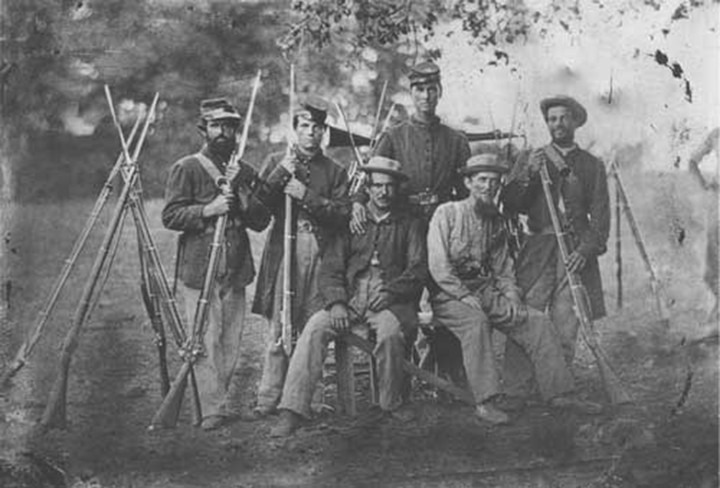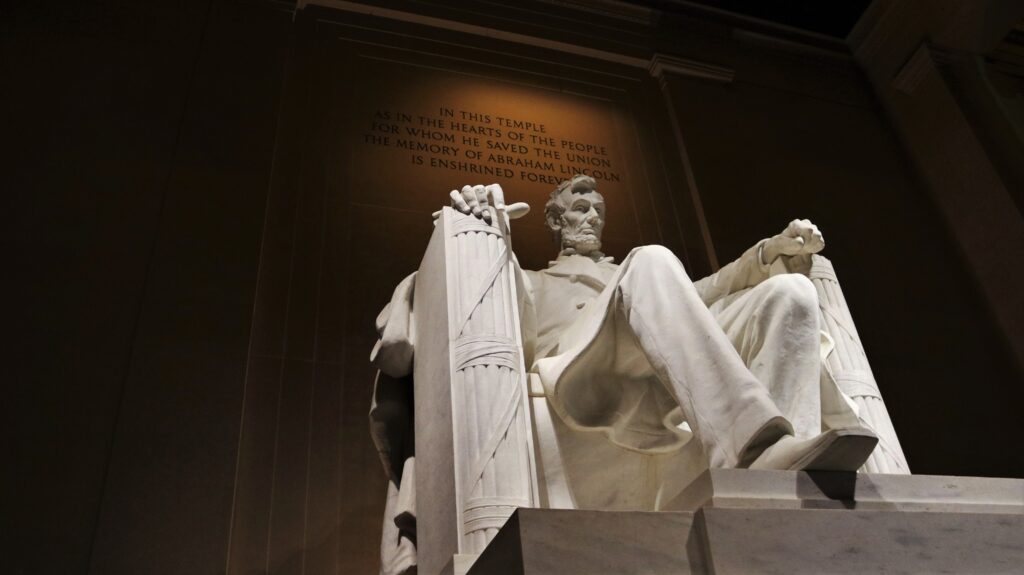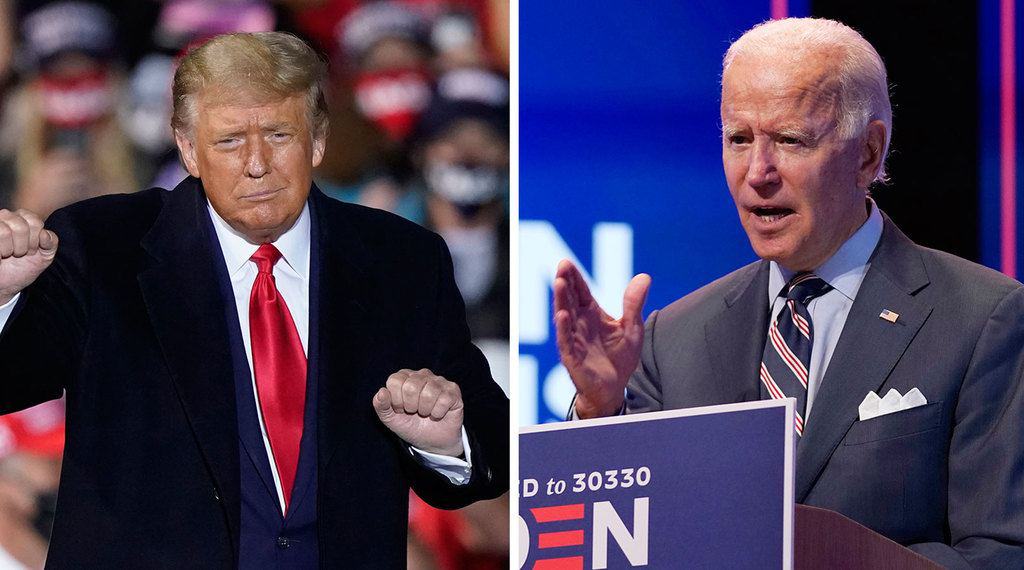Somehow, the causes of the Civil War are back in the political discourse.
Presidential candidate and former governor Nikki Haley, who at one time made news for taking down the Confederate flag in her state, recently managed to dodge mentioning slavery when discussing what led to the Unpleasantness between the States. Likewise, in an apparently unprompted move, former president and current candidate Donald Trump brought the war up in a recent speech, reducing it to “they just couldn’t get along” and implying that the entire thing could have been negotiated away.
But politicians are not alone in their current interest in the war. One of the nation’s largest groups dedicated to lionizing the Confederate States of America’s combatants is planning to install a shrine along an Interstate in Arkansas. In doing so, they are specifically insistent that the American Civil War was not about slavery or the notion of racial supremacy.
The Sons of Confederate Veterans James M. Keller Camp No. 648 plans to erect a 40-foot-tall flagpole to fly a 20-foot-by-20-foot Confederate flag. The flagpole will be located on land close to where the 3rd Arkansas Infantry Regiment’s Company F mustered in for service to fight against the United States. The land is near Interstate 30 in Rockport and will be readily visible to travelers.
The Malvern Daily Record reported the planned installation’s initial announcement in September:
The members of SCV Camp #648 come from all over central Arkansas and include HSC Justice of the Peace for District 4, Darrin Hardy, who is the group’s 1st Lt. Commander. Hardy shared that the group has dedicated years of effort and raised close to $35,000 to bring their flag-raising plans to fruition.
“It’s been in the works for several years,” Hardy said. “I really don’t think it’s going to be as big a problem as a lot of people do.”
Hardy said his group thinks their ancestors deserve the same respect and remembrance as other U.S. military veterans, and that most people do not understand the true nature of the war that claimed the lives of an estimated 620,000 American soldiers on both sides of the battle lines, including 258,000 Confederate deaths.
“They fought for what they believed in, and everybody thinks that war was over slavery, but if you really sit down and study it, it wasn’t,” Hardy said.
Hardy pointed to the Morrill Tariff and the Corwin Amendment as contributing factors as to why Southern states wanted to secede.
Among apologists for the Confederacy, it’s common to point to economic arguments as the reason why the war started — and those resentments indeed existed.
But when discussing the causes of the war, it’s always instructive to listen to the words of the people who were there at the time. Since the monument is set for erection in Arkansas, let’s consider the words of those electing for secession in that state. The heart of their enumerated grievances leading up to the war were not tariffs; they were about slavery and an explicit commitment to the notion of racial supremacy.
Arkansas’ secession convention met for two and a half weeks in March 1861, before the start of the war. The war began in April of that year, and on May 6 the convention’s membership reassembled for a special session and adopted a secession ordinance. The ordinance itself does not mention slavery but refers in its opening sentence to the Causes of Complaint that the secession convention adopted on March 11.
The causes of complaint appear modeled on the Declaration of Independence, though they are far shorter, numbering only six. All six complaints explicitly mention slavery, and even the opening statement says that the complaints are “against their brethren of the northern, or non-slaveholding states.” The document also makes it clear that the conventioneers are not only defending the concept of slavery, but an explicitly race-based concept of slavery.
The first of the enumerated complaints is that the Republican Party was organized around “the central and controlling idea … [of] hostility to the institution of African slavery, as it exists in the southern States”, and that its candidates had been elected President and Vice President. The President — the complaint says — was “pledged to administer the government upon principles inconsistent with the rights, and subversive of the interests of the people of the southern States.” To wit: they were afraid that the President would not allow them to continue to practice the institution of slavery.
The second complaint had two components. The first was that the people of the northern states would not provide slave owners “protection to their slave property therein that is afforded to other property,” and had in some instances refused to send escaped or otherwise transported slaves back to southerners who claimed ownership of them. The second part of complaint No. 2 was that the northern states had taken a strong stand that no more slave states should be added to the Union. Northern leaders had “declared the doctrine of the irrepressible conflict, or the assertion of the principle that the institution of slavery is incompatible with freedom and that both cannot exist at once, that this continent must be wholly free or wholly slave,” the adopted Causes say.
Complaint No. 3 was where the Convention leaned into the refrain often heard in Confederate apologia, a complaint about states’ rights — although the only named right they are concerned with is slavery. In No. 3, the Convention contended that Congress did not have the constitutional authority to abolish slavery in — not just the southern states — but likewise the at-the-time U.S. territories, in Washington D.C., and “in the first, arsenals and dock yards of the United States, within the limits of the slaveholding States.”
Points No. 4 and 5 are related, complaining that northern states have “obstructed the faithful execution of fugitive slave laws” and that they have “denied the citizens of southern States the right of transit through non-slaveholding States with their slaves, and the right to hold them while temporarily sojourning therein.” In other words, they were upset that the places that did not recognize slavery as legal did not allow people passing through them to practice slavery.
The final enumerated complaint was a clear coat of racial supremacy over the previous five points: “They have degraded American citizens by placing them upon an equality with negroes at the ballot-box.” The convention, simply, was offended that Black people might be given equal footing with them in making electoral decisions.
In seeking redress for their complaints, and ostensibly in seeking to avoid the war that broke out following the March session, the Arkansas conventioneers called for a U.S. Constitutional convention. They sought to amend the Constitution to include a provision that the President and Vice President, “shall each be chosen alternately from a slaveholding and non-slaveholding state—but, in no case, shall both be chosen from slaveholding or non-slaveholding states.” The proposed amendment would have limited Congress’ ability to craft legislation about slavery “except to protect the citizen in his right of property in slaves.”
They also sought federal protection and expansion of “slavery of the African race” by extending the Mason-Dixon line to all territories, including future ones.
Another of the document’s Constitutional proposals was the idea of enshrining the right to extract financial penalties from the federal government when local municipalities used violence to resist or otherwise prevent the return of escaped slaves. Concurrent with that, the conventioneers demanded the right to travel into non-slave states with their slaves without fear of losing them.
Circling back around to their offense at the idea of being considered equal with Black people, the convention’s proposed solution was that, “The elective franchise, and the right to hold office, whether federal, State, territorial or municipal, shall not be exercised by persons of the African race, in whole or in part.”
They capped their proposed Constitutional amendment with the demand that it could only be amended or otherwise changed by approval of every state — a threshold that other Constitutional amendments do not have to clear.
The convention delegates ratified the causes with a vote 37-29 in March. When they reassembled in May and adopted the secession ordinance that referred back to the causes of complaint as foundational reasons for their vote, the delegates voted 65-5 to adopt it.
They may have had other reasons, but in Arkansas — and across the Confederacy — the threshold for secession was keeping the institution of slavery.
Even when removing the gloss of historical romance from the telling, it is nearly impossible to separate the individual fighter’s reasons for joining in an armed conflict from the causes of the people directing his actions. The fighter may not carry the full moral culpability of the crusade, but a stained crusade is always going to be stained. The deaths of the men who fought for the Confederate States of America, and the deaths that they caused, were tragic, whatever their motivations for fighting. They were fighting for the slave-owning class to continue to assert that they did not believe that “slavery is incompatible with freedom.” Those men should be remembered, but with no romantic gloss, because the innocent among them were misled and the guilty among them were choosing to fight for an evil institution. Others were conscripted into service to fight for the same.
The war — as are all wars — was ugly. Adding to the ugliness was the reality that the states did not have to take up the fight. As one of the Sons of Confederate Veterans told the Daily Record:
“And we’re the only country in the world that killed a million people to do away with slavery, everywhere else they just phased them out by either the government behind them or just peaceful terms,” Hardy said.
The problem was, that the legislators and conventioneers in Arkansas did not want to envision a future that would allow the institution of slavery to phase out. They wanted to expand it. That’s the resolution they adopted. That’s the vision that the whole of the Confederate leadership endorsed.
They were willing to send their men to fight for that vision, to kill for it, and possibly to die for it. No matter what else motivated the men who fought for the CSA, there is no way to separate the fact that, for the seceding states — to borrow language from Arkansas’ neighbor, Mississippi’s adopted list of causes — their “position is thoroughly identified with the institution of slavery.”
That doesn’t deserve a monument, and it doesn’t deserve for politicians to talk around it.







